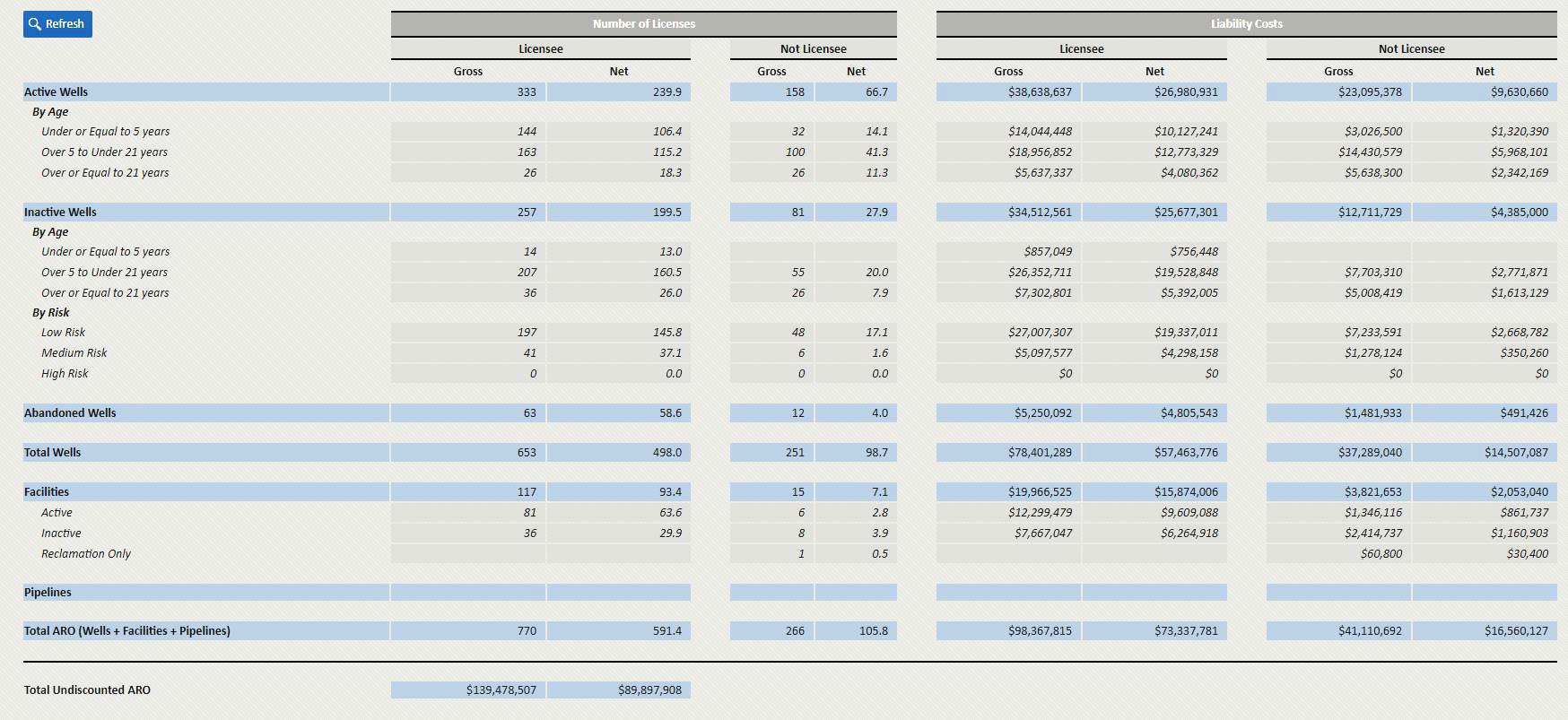Word to the Wise: What you need to know about working interest in ARO
December 10, 2019
When it comes to calculating liability obligations and dealing with your retirement obligation planning, working interest partners are one of the biggest sources of confusion and frustration. XI Technologies has found questions about working interest and how it affects Asset Retirement Obligations (ARO) to be among the most commonly discussed topics in the industry. To help with these questions, this week’s article will summarize the biggest lessons about how working interest affects ARO, some of which have been previously shared in part in previous articles.
Each week, XI Technologies scans its unique combination of enhanced industry data to provide trends and insights that have value for professionals doing business in the WCSB. If you’d like to receive our Wednesday Word to the Wise in your inbox, subscribe here.
Working Interest in LLR on Operated Retirement Obligations
The Alberta Energy Regulator’s Licensee Liability Rating (LLR) Directive 011 applies 100% of deemed liability values to the licensee and does not account for non-operated working interest. If you’re using LLR to determine your ARO, you will need to adjust your costs to account for the difference between the deemed liabilities from the AER and your actual obligations depending on your working interest share.
If you’re examining your own licenses, you can apply working interests to the properties to make your ARO calculations. However, the task is more difficult when trying to do an early evaluation of an asset acquisition opportunity as the non-licensee properties will be hidden from the overall cost, leading to estimates that could be off by a significant amount.
Paying Attention to Working Interest on Non-Operated Retirement Obligations
Because LLR applies 100% of deemed liability values to the licensee, some may incorrectly assume that since deemed liabilities rest with the licensee operator, then non-op partners don’t need to pay as close attention to their abandonment and reclamation liabilities on non-op assets. We all know this just isn’t true; working interest partners are held liable for the retirement and abandonment of assets they share working interest in and will be called on to pay their share of the liabilities.
For many producers, non-op assets are a big part of their portfolio, sometimes even make up the majority of it. But tracking their ARO for those assets, who they share those assets with, and the potential for some of those assets to be retired by their operators can be much harder to do. Without a system in place for monitoring and evaluating their non-op wells and facilities, they might not be aware of pending non-op ARO liabilities until a cash call comes in and wreaks havoc with their budget.
Keeping track of non-op ARO becomes even more important in light of British Columbia’s mandatory closure laws and Alberta’s Directive 013 reduction targets and the Area Based Closure Program. These place a degree of urgency on abandoning dormant sites, and companies not on top things with their working interest partners could easily be in for a large bill in the near future that they weren’t expecting and hadn’t budgeted for.
Finding Working Interest Partners
With large asset portfolios combined with years and years of acquisitions, swaps, and divestitures being a regular part of day to day business, it can be difficult to maintain a solid understanding of one’s working interest properties, liabilities, and partners. Most companies know what their own working interest properties are but knowing who they’re partnered with can be difficult to keep up with. Properties can change hands multiple times through various sales, leaving you sharing abandonment and reclamation obligations with companies without your knowledge, which could become significant should one of those companies cease to exist.
An even trickier proposition than knowing all your own working interest partners is to have a good understanding of the working interest of an over-the-fence potential asset of interest. Historically, this has been an important piece of information during the preliminary analysis of an asset acquisition. It is even more critical now, following the landmark Redwater decision, with such a large focus being placed on liabilities and potential closure orders.
Accuracy and transparency in working interest have become more important than ever precisely when it is becoming more difficult than ever to track. With more companies running up against tough times, it forces producers to come up with new solutions for verifying and monitoring their working interest partnerships. Producers need a process to stay on top of their working interest partners throughout all the potential changes to properly understand their asset retirement obligations.
Solutions
Due to the important role working interest plays in determining liabilities, it’s essential that producers establish a process of accounting for them when calculating their ARO. That means a cost model that goes beyond LLR and takes working interest into account. That means a process for tracking where your non-op working interests are in their life span and staying on top of who your working interest partners are for every asset you share.

XI Technologies provides just such a process. Its ARO management tool, ARO Manager, takes working interest into consideration, with proprietary algorithms that have been the leading industry standard for estimating working interest for the past 20 years. Using ARO Manager gives producers an easy and effective way to keep track of all your liabilities, who you share them with, and when their abandonments are due.
For more information on the importance working interests plays in ARO and how XI Technologies addresses that importance, watch this video from a recent webinar on the subject. For a more in-depth look at ARO Manager book a personalized demo, or contact XI Sales.
